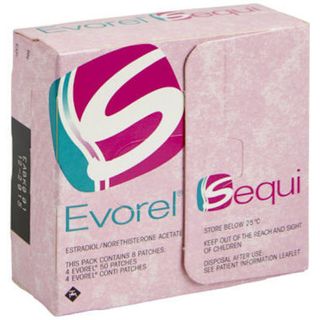
Menopause (HRT)
No two people experience the menopause in the same way, and your symptoms, triggers and challenges will be as unique and individual as you are. The menopause normally starts between the ages of 45 and 55, although some people can start to feel the effects of their changing hormones much earlier.
Common symptoms include hot flushes, low libido, vaginal dryness, anxiety and brain fog. You might also just feel a little less like ‘you’. If this sounds familiar, don’t worry, HRT awareness and other treatment options have improved a lot in the past few years and, with our help and support - and a little trial and error - finding the right options for you should be easy.
Menopause (HRT) Treatments
 Evorel Sequi Patches£27.0053 reviews
Evorel Sequi Patches£27.0053 reviews- Best seller
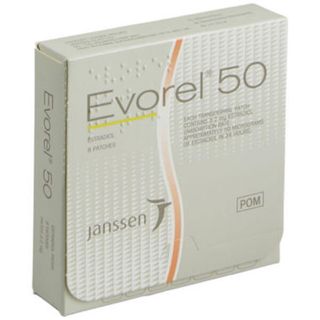
Evorel Patches
Evorel Patches (25, 50, 75 & 100)from£15.00211 reviews 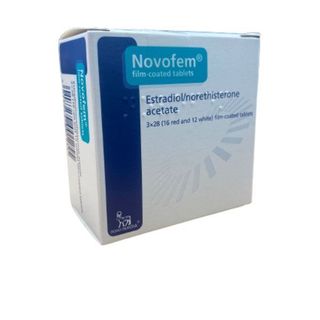
Kliofem Tablets
Kliofem Tablets£26.0071 reviews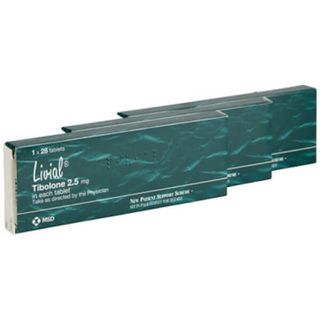
Livial Tablets
Livial Tablets£61.9512 reviews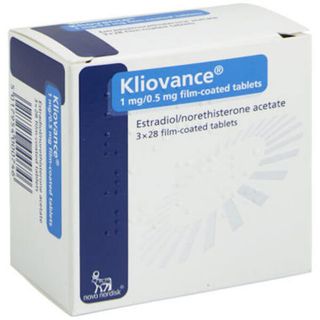
Kliovance Tablets
Kliovance Tablets£35.0049 reviews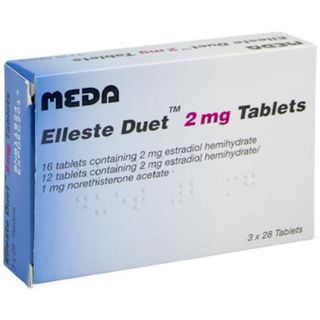
Elleste Duet Tablets (1mg, 2mg & Conti)
Elleste Duet Tablets (1mg, 2mg & Conti)from£30.9988 reviews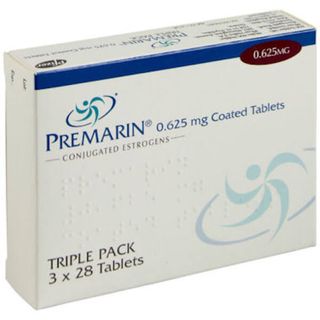
Premarin Tablets (0.3mg, 0.625mg, & 1.25mg)
Premarin Tablets (0.3mg, 0.625mg, & 1.25mg)from£26.99114 reviews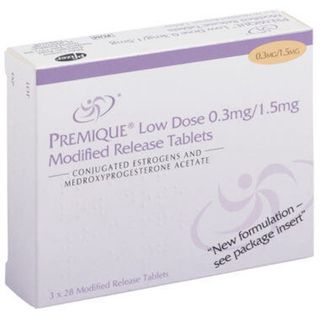
Premique Low-Dose Tablets
Premique Low-Dose Tabletsfrom£30.9948 reviews- Out Of Stock
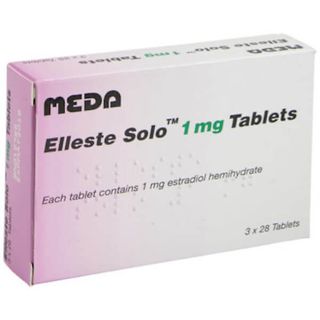
Elleste Solo Tablets (1mg & 2mg)
Elleste Solo Tablets (1mg & 2mg)from£27.99106 reviews - Out Of Stock
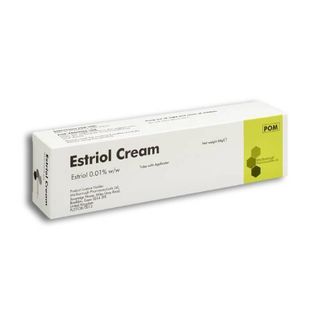
Estriol Cream 0.01%
Estriol Cream 0.01% - Out Of Stock

Ovesse 1mg/g Vaginal Cream
Ovesse 1mg/g Vaginal Cream - Out Of Stock
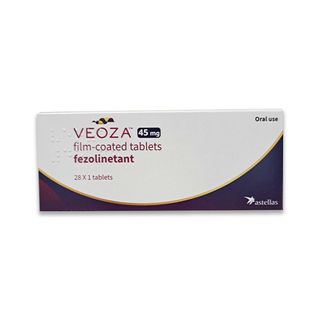
Veoza Film-coated Tablets (45mg) (ON HOLD)
Veoza Film-coated Tablets (45mg) (ON HOLD) - Out Of Stock
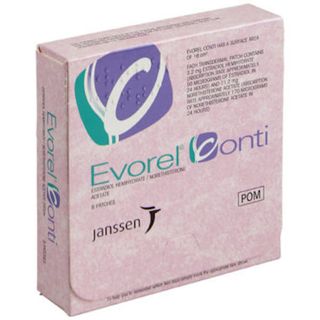
Evorel Conti Patches
Evorel Conti Patches£69.00140 reviews - Out Of Stock
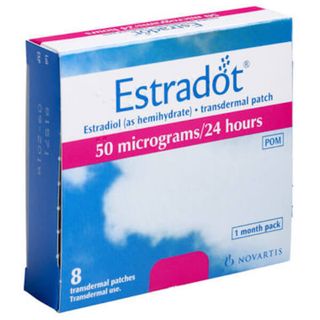
Estradot Patches (25, 50, 75 & 100)
Estradot Patches (25, 50, 75 & 100)53 reviews - Out Of Stock
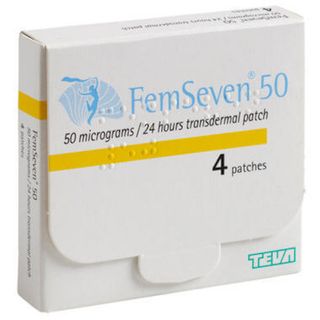
FemSeven Patches (50, 75, & 100)
FemSeven Patches (50, 75, & 100)14 reviews - Out Of Stock
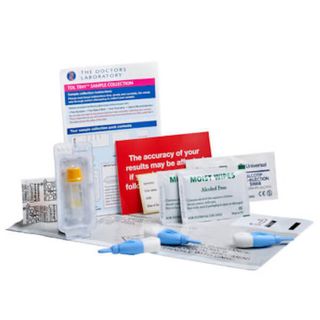
Female Testosterone Test
Female Testosterone Test - Out Of Stock
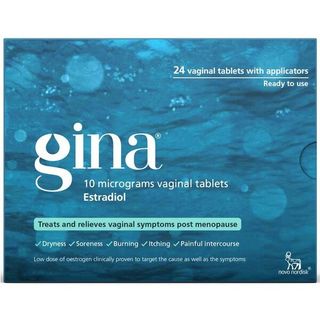
Gina Vaginal Tablets
Gina 10mcg Vaginal Tablets - Out Of Stock
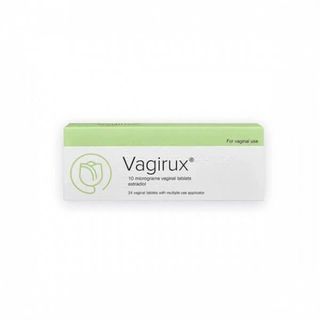
Vagirux Pessaries
Vagirux Pessaries - Out Of Stock

Utrogestan 200mg Vaginal Capsules
Utrogestan 200mg Vaginal Capsules - Out Of Stock
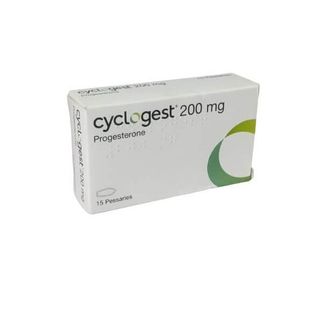
Cyclogest 200mg Pessaries
Cyclogest 200mg Pessaries - Out Of Stock
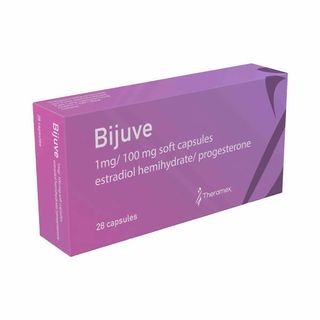
Bijuve Capsules
Bijuve Capsules - Out Of Stock
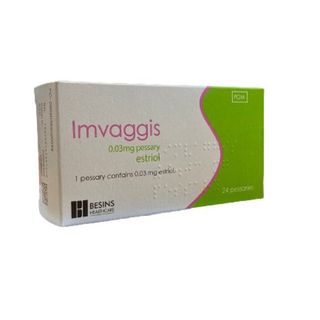
Imvaggis 0.03mg Pessaries
Imvaggis 0.03mg Pessaries - Out Of Stock
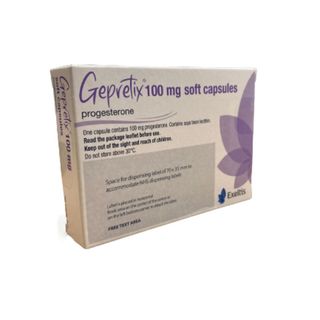
Gepretix 100mg Soft Capsules
Gepretix 100mg Soft Capsules - Out Of Stock

Estriol Cream
Estriol Cream - Out Of Stock

Blissel Vaginal Gel
Blissel Vaginal Gel - Out Of Stock
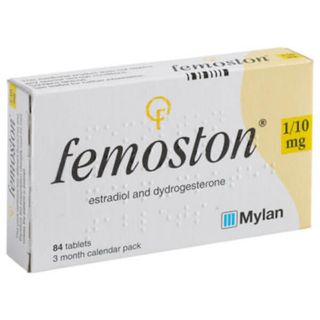
Femoston
Femoston19 reviews - Out Of Stock
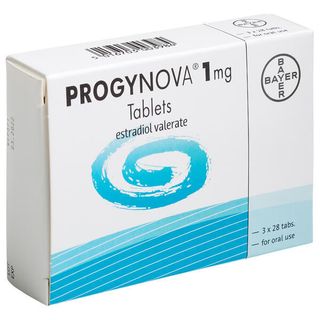
Progynova Tablets
Progynova Tablets1 review - Out Of Stock
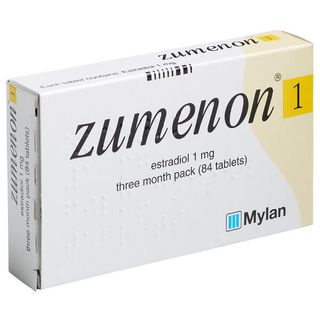
Zumenon
Zumenon2 reviews - Out Of Stock

Sandrena Gel
Sandrena Gel31 reviews - Out Of Stock
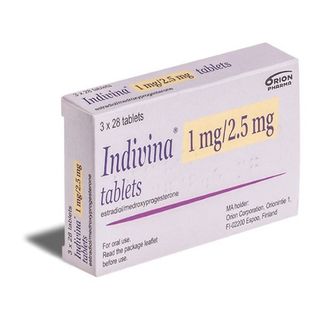
Indivina
Indivina - Out Of Stock

Replens MD
Replens MD - Out Of Stock

Novofem
Novofem2 reviews - Out Of Stock

Trisequens
Trisequens - Out Of Stock
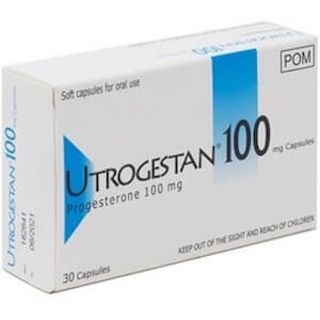
Utrogestan 100mg capsules
Utrogestan 100mg capsules86 reviews - Out Of Stock
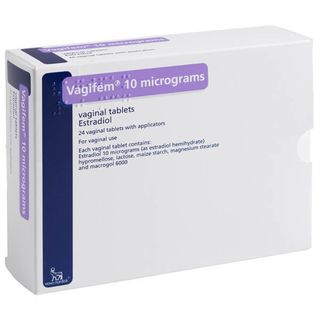
Vagifem Vaginal Tablets
Vagifem Vaginal Tablets64 reviews - Out Of Stock
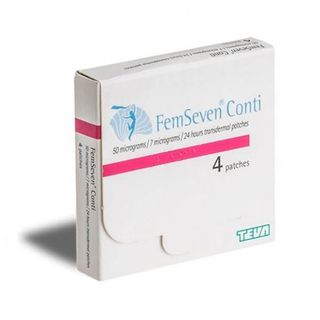
FemSeven Conti Patches
FemSeven Conti Patches - Out Of Stock

Oestrogel
Oestrogel - Out Of Stock
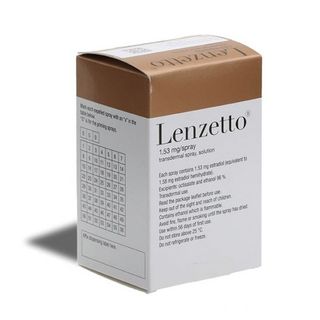
Lenzetto Spray
Lenzetto Spray - Out Of Stock
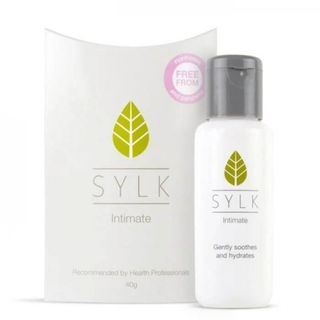
Sylk
Sylk - Out Of Stock

Vagisan Moist Cream
Vagisan Moist Cream
Start your assessment for Menopause (HRT)
Don't wait to get the medical help you need.
Once you complete a short online assessment about your condition, you will be able to select your preferred treatment and quantity from a list of appropriate options for you.
Reviewed by our UK-based medical team
Takes less than 3 minutes to complete
Approved treatments dispatched same day (before 3pm)
Ordering as easy as 1, 2, 3
1. Find the ideal treatment
We can provide over 1099 leading medicines to treat over 94 conditions.
2. Get a free consultation
Our qualified healthcare professionals will assess your condition and needs.
3. Enjoy speedy delivery
And when the time comes to re-order, it'll only take a couple of clicks.
Advice for Menopause (HRT)
What is the Menopause?
Hormone Replacement Therapy (HRT) is a type of treatment used by women to help relieve the symptoms of the menopause. As women approach the menopause, the female hormones oestrogen and progesterone begin to reduce. This reduction can cause a variety of unpleasant symptoms, including;
- Vaginal dryness
- Mood swings
- Hot flushes
HRT treatments are designed to replace these hormones, allowing the body to return to normal.
The menopause occurs when a woman’s ovaries stop releasing an egg every month. This means she will no longer experience her monthly menstruation (period) cycle and she will no longer be able to have children. On average the menopause will occur during a women’s early fifties. However, some women do experience the menopause in their 40’s, and for a small percentage of women, in their 30’s.
What symptoms do women experience during the Menopause?
Oestrogen plays an important role in a woman’s body. It is responsible for releasing eggs from the ovaries as well as regulating a woman’s period. It also plays a role in controlling skin temperature, bone density and keeping the vagina moist. The reduction of oestrogen is responsible for the majority of symptoms associated with the menopause. These symptoms include:
- Vaginal dryness
- Reduction or loss of libido (sex drive)
- Osteoporosis (resulting from the bones becoming less dense)
- Hot flushes
- Night sweats
- Stress incontinence (leaking of urine when a sufferer coughs or sneezes)
For the majority, these symptoms will usually pass within two to five years. However, vaginal dryness and stress incontinence may continue and possibly get worse if not treated. The risk of developing osteoporosis will continue to increase with age.
Progesterone is responsible for preparing the womb for pregnancy. The reduction of this hormone from the body doesn’t produce the physical symptoms associated with the menopause. If a menopausal patient with a uterus were to solely take oestrogen to counteract the symptoms then this would put them at an increased risk of developing endometrial cancer (cancer of the womb or uterus). This is why progesterone is taken in conjunction with oestrogen to help reduce this risk.
How is Menopause diagnosed?
Your GP can diagnose menopause based on your symptoms and medical history. In a small number of cases, your doctor may wish to carry out a blood test. A blood test will be able to check the levels of follicle-stimulating hormone (FSH) and oestrogen in the blood. During the menopause your FSH levels increase and your oestrogen levels decrease.
The decision as to whether HRT is required is on a case-by-case basis. It will depend on the severity of the symptoms, the medical history of the patient and the relative risk of any treatment as well as the preference of the individual for treatment.
Due to the different types of HRT treatments available and the potential risks associated with each, it is never safe to self-treat menopause symptoms. You should always seek a professional diagnosis from your doctor who can select the appropriate HRT for your condition and medical history.
What HRT treatments are available?
HRT is designed to replace the hormones oestrogen and progesterone that decrease during the menopause. HRT treatments derive these hormones from different sources:
- Oestrogen is taken from plants or other sources.
- Progesterone is available synthetically (artificially) produced in a form that is easier for the body to absorb. Also in a body identical form called Utrogestan.
There are more than fifty different HRT preparations available and deciding which treatment is appropriate can be difficult. Usually, a low dose of hormone treatment is recommended to begin with. This will help minimise any side-effects and will allow for the dose to be increased if a lower dose has proven ineffective. It is advised to persevere with hormone replacement treatment for a few months before concluding whether the treatment has worked well for you. The different types of HRT treatment are outlined below:
Oestrogen-only HRT: This is only recommended for women who have had a hysterectomy. Taking oestrogen on its own carries an increased risk of developing endometrial cancer (cancer of the womb or uterus). However, if the womb has been removed via a hysterectomy then this is no longer a concern.
Examples include: Climaval (discontinued), Elleste-Solo, Progynova, Zumenon, Evorel, Estradot, FemSeven and Premarin.
Cyclical HRT: This type of treatment can also be referred to as sequential HRT. Usually, this form of HRT is recommended for those suffering from the symptoms of menopause but who are still experiencing their periods. There are two different types of sequential hormone replacement therapy:
- Monthly cyclical HRT is where oestrogen is taken every day and progestogen is taken at the end of your period for 12-14 days. Monthly cyclical HRT is recommended for women who experience regular periods.
- Three monthly cyclical HRT involves taking oestrogen every day and progestogen for 12-14 days, every 13 weeks. This form of HRT treatment is recommended for women who experience irregular periods.
Continuous combined HRT treatment: This form of HRT treatment is recommended for post-menopausal women. A woman is classed as being post-menopausal if they haven’t had a period for a year. Continuous combined HRT treatment involves taking oestrogen and progestogen every day without a break.
It is advised that women who are on HRT long-term should consider using topical treatments, such as gels or patches, as the risk of using these treatments long-term has been shown to be very low.
The HRT treatments available from The Independent Pharmacy are:
Elleste Solo 1mg tablets, Elleste Solo 2mg tablets, Elleste Duet 1mg tablets, Elleste Duet 2mg tablets, Elleste Duet Conti tablets, Evorel patches, Femoston, Kliofem, Kliovance, Livial tablets, Novofem, Premarin 0.625mg tablets, Premarin 1.25mg tablets, and Premique Low Dose tablets.
HRT treatments from The Independent Pharmacy must be repeated supplies of an HRT treatment that has been prescribed by your doctor previously and is still appropriate.
Can I prevent the symptoms of Menopause?
The menopause is a natural part of life and cannot be prevented. There are measures that can be taken that will help reduce the menopausal symptoms should you choose not to take hormone replacement therapy or want to adopt lifestyle changes to go alongside your treatment. These measures include:
- Taking regular exercise. This has been shown to reduce symptoms of hot flushes. It will also improve your quality of sleep. Exercise releases endorphins, which are natural mood boosters, helping you to feel less irritable and depressed.
- Avoid alcohol, caffeine and spicy foods; they are all known triggers for hot flushes. By reducing your intake you can decrease your likelihood of experiencing them.
- It’s helpful to stay cool at night. Wearing loose clothes and sleeping in well-ventilated rooms can help in relieving night sweats and hot flushing.
- If you are a smoker, kicking the habit has been shown to reduce hot flushes. As an added benefit it will also reduce the risks of developing serious health conditions, such as heart disease and cancer.
- Herbal remedies such as Black Cohosh, Red Clover, Ginseng and Evening Primrose Oil are reported to have some effect in reducing hot flushes and mood swings although clinical studies provide mixed evidence. Always check with your doctor before taking any herbal remedies.
Alternatives
Some non-medicinal alternatives for the symptoms of Menopause are;
For Night Sweats and Hot Flushes
- Using a fan
- Cool showers
- Wearing light clothing
Vaginal Dryness
- Lubricants
Other Alternatives
- A healthy diet and regular exercise
- Stopping smoking
- Taking additional vitamin supplements
Menopause (HRT) FAQs
Menopause is the name for the point in a woman’s life when she no longer has a menstrual cycle. Because of this, she becomes unable to have a pregnancy naturally.
Most women will notice that, over a period of months or years, periods gradually happen less frequently. For some women, however, this happens quite suddenly.
For British women, the average age of menopause is 51. The normal range is between the ages of 45 and 55.
Levels of oestrogen production begin slowly to decline in a woman’s thirties, and so it is common to experience early menopausal symptoms while still having regular periods. The duration and severity of these early symptoms vary greatly between individual women.
Also known as premature ovary insufficiency, this occurs when a woman experiences the menopause before she reaches the age of 40. This occurs only in around one per cent of women.
Depending on their severity, some menopausal symptoms can have a substantial effect on a woman’s day-to-day life.
These symptoms can include:
- Hot flushes
- Vaginal dryness, leading to discomfort during sex
- Insomnia and night sweats
- Reduced libido
- Anxiety and inability to focus
- Issues with memory
Experiences with menopausal symptoms vary significantly depending on the individual. They can begin multiple years prior to the menopause itself and remain for many years.
Women will, on average, experience symptoms for about four years. In roughly ten percent of women, symptoms will persist for much longer – up to twelve years.
Three-quarters of menopausal women experience hot flushes, making it the most common of these symptoms. In a hot flush, a woman feels a spontaneous heat that spreads throughout the body. You might notice sweating, an unusually strong heartbeat, and a sudden red blush of the skin. This is likely caused by irregularities in the body’s temperature control as a result of hormone changes.
There is a huge variance in the possible severity of hot flushes. For some women, they occur very infrequently and so are only a mild nuisance. Others, however, experience up to 20 episodes each day. At this frequency, they can become very disruptive and problematic. Most women experience flushes for around four years after their menopause, but others deal with episodes until old age.
In Hormone Replacement Therapy (HRT), a woman takes oestrogen to counteract the decline in naturally-produced oestrogen that is associated with menopause. This helps to relieve many of the symptoms mentioned above.
Cognitive Behavioural Therapy consists of changes to lifestyle, which include exercising, improving sleep patterns, and relaxing with techniques such as yoga.
Vaginal moisturisers or lubricants are an alternative to vaginal oestrogen in managing vaginal dryness.
There are multiple possible methods of HRT, including tablets, patches, gels and implants. These contain oestrogens which are ‘natural’ in the sense that they mimic the substances that the body produces. These include oestrone, oestradiol and oestriol, which are extracted from yam and soya.
HRT can very effectively mitigate the symptoms of menopause, including night sweats and hot flushes.
Women undergoing HRT can experience headaches, vaginal bleeding and breast tenderness as side effects.
Furthermore, combined HRT (oestrogen plus progestogen) was shown to increase the risk of breast cancer, in a trial by The Women’s health Initiative. No such increase was found for women on oestrogen-only HRT. However, progestogen is in many cases necessary to prevent the known risk of uterine cancer. If she has had a hysterectomy, it is not usually necessary to give a patient combined HRT.
Even for women taking combined HRT, the risk of cancer tended only to increase after a sustained HRT treatment. So, the medical consensus is that the benefits of HRT exceed its risks, so long as it is not used for more than five years. Risk increases with the duration of HRT, so your individual risk of cancer should be assessed each year with your doctor.
Some forms of HRT are also associated with a heightened risk of blood clots, especially deep vein thrombosis and pulmonary embolism (a blockage of the artery leading to the heart). Other medicines without these risks may be a better option for some women.
Using topical HRT, such as gels or patches, at the lowest dose required to control your symptoms has been shown to carry minimal risks and can be used as long as required to control the symptoms of menopause.
Hormone Replacement Therapy can be oestrogen-only, or combined with progestogen. Oestrogen-only HRT can increase the risk of uterine cancer, and so is advised only for women who have had a hysterectomy.
Combined HRT is associated with heightened risk of some other cancers, but only after treatment spanning many years.
Many menopausal symptoms will cease after two to five years, so women can stop HRT after this amount of time, however transdermal HRT can be continued as long as your symptoms persist.
If you decide to stop using HRT, in order to prevent a relapse of symptoms, hormone intake should be gradually reduced. Any symptoms that do recur should stop within the following months. If these symptoms do continue for several months, it may be necessary to resume HRT at a lower dose. Discuss your treatment options with your GP.
Once hormone replacement has finished, it may be necessary to seek other treatments to prevent osteoporosis and/or vaginal dryness.
HRT is unsuitable for pregnant women, or those with a history or high risk of:
- Breast cancer, ovarian cancer or uterine cancer
- Heart disease
- Blood clots or stroke
- Liver disease
Other issues such as high blood pressure or irregular periods must be resolved before HRT can begin.
Osteoporosis is a weakening of bones that is caused by reduced oestrogen levels. It is much more prevalent in women who have reached their menopause.
There are many ways of decreasing your risk of osteoporosis:
- Oestrogen from HRT can prevent osteoporosis in the short term – this effect will not last after HRT finishes.
- Resistance and weight exercises will help with strength
- A diet rich in fruit and vegetables, as well as calcium sources such as dairy
- Regular exposure to sunlight for the natural production of vitamin D
- Calcium and vitamin D supplements – you should discuss the appropriate intake with your GP
- Quitting smoking and reducing the consumption of alcohol
Menorrhagia, or heavy periods, is very common in women between thirty and fifty years of age. There will sometimes be an identifiable cause, such as fibroids, blood blisters, cysts or polyps in or around the uterus. Otherwise, it can just be a result of the changing hormone balance around the time of menopause, or of the process of ovaries ageing and failing.
You should consult your GP if you experience menorrhagia, as it is often a cause of further illness.
Specific treatments are not always required for Menorrhagia. If, however, your periods are severely heavy, multiple options are available:
- Cyclokapron or Tranexamic Acid – an effective drug which mitigates blood flow by controlling clotting within uterine vessels. There are no significant side effects, and it can be taken up to twelve times daily.
- Mefenamic Acid or Ponstan – an anti-prostaglandin drug which reduces pain and prevents heavy bleeding.
- Mirena Coil – a small device that is inserted into the uterus, similar to an IUD. It releases progestogen to thin the uterine wall, reducing the volume of periods. There is an initial side effect of irregular bleeding, but this usually stops as the body adjusts to the coil. The Mirena has the added benefits of providing the progestogen component of a combined HRT, as well as acting as a contraceptive.
- Cyclical progestogen hormones – pills containing progestogen, taken for a section of the menstrual cycle. They regulate menstruation, preventing Menorrhagia from following an occasional missed period. The hormones may also prevent other menopausal symptoms like hot flushes and night sweats.
- Surgical treatments – surgery to ablate the uterine wall might be recommended by a GP. This is a one-day operation which occurs under anaesthetic. It will cause periods to lighten or cease entirely.
- Hysterectomy – the removal of the uterus, a major surgical procedure requiring four days in hospital followed by a recovery of up to three months. This is the most effective method for Menorrhagia, but is done less and less frequently due to the other safer and very reliable alternatives which are now available.
If you are taking HRT to treat premenopausal symptoms, your HRT must involve both oestrogen and progestogen given sequentially. Under sequential HRT, you will take oestrogen every day and progestogen for a minimum of ten days each month. This will allow your menstrual cycle to continue – for most women, a period will occur either at the beginning or end of each pack. As this HRT will neither regulate nor lighten menstruation, it should not be used as a treatment for Menorrhagia.
Upon reaching the menopause, sequential HRT can easily be switched to continuous combined HRT. Under this routine, you will take both oestrogen and progesterone each day. After the first six months of this HRT, the body will adjust and no more bleeding should occur.
Vaginal tissues can become thin and dry as a result of decreased oestrogen levels. This can cause discomfort and sometimes pain during sexual activity.
If systemic HRT is not an option, other topical oestrogen treatments are available. These include creams, vaginal tablets, waxy pessaries and vaginal rings. Each of the first three requires a daily application for the first fortnight, and two doses per week subsequent to that. Vaginal rings can remain in for up to three months.
At the low regular dose, none of these oestrogen treatments will have significant side effects. Unlike in HRT, no progestogen is required to protect the uterine wall.
Non-hormonal treatments for vaginal dryness are available, including a range of bio-adhesive vaginal moisturisers, which can be purchased over the counter. These are preferable to regular lubricants because they need not be applied at the time of intercourse, and can prevent infections by virtue of being somewhat acidic. Other products that are available via prescription are Yes, Replens MD, Hyalofemme and Sylk.
Guides for Menopause (HRT)
Signs Of Perimenopause: The Symptoms & Facts You Need To Know
Migraines And Menopause: Are They Linked?
Post menopause symptoms & treatments: everything you need to know
A Guide To The Best HRT Patches
HRT Patches vs HRT Tablets: Which HRT Treatment is Right for You?
How Does Menopause Affect Sleep?
We've written 30
more guides
for Menopause (HRT)
We also offer health & advice tailored to you.


